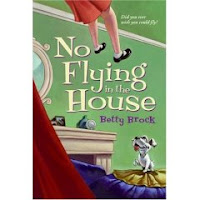A living-books curriculum is rich in content- but what does that look like? What does that look like when your 9 year old needs reading help?
"A living-books curriculum uses the content areas-science and history-as the framework upon which learning is built. Language Arts are taught in the context of content-history, science, religion, and literature. Needless to say, these courses of study move well beyond "neighborhood helpers" and "why we need the rain forest". They also move beyond the facts. Literature reaches the heart of the child. It inspires him. It engenders enthusiasm for learning and a desire for discovery. ...Well-written literature offers both content and context. Together, both the parent educator and the pupil ponder deeply truth and fallacy. They consider God's hand on the world as it was and as it is. And they are moved to consider His call regarding how it should be."
-Elizabeth Foss, Real learning: education in the heart of the home
I love to read, I am always reading several books at once. My children love to read- we have a library basket that typically hold 30 books from 2 libraries, continually.
But, as a homeschooler- I was faced with some decisions to make when I began to suspect that my 9 year old was reading quickly and voraciously..but did not seem to be understanding or remembering what she had read.
Charlotte Mason's philosophy of education is what I agree with, whole-heartedly way down in my bones. But, when side-swiped by a hole in our learning...I usually run by instinct to a textbook type workbook. Why? I suppose because that is what I grew up with, and because it satisfies this panic in me that " I must actively do something to fix this". So, I did check out the workbooks my local bookstore had to offer and also seriously pondered ordering a series of old fashioned Christian readers I saw in a catalog that boasted of comprehension and spelling work right in the reader...hey, more bang for my buck!
Mid panic, I checked myself though-and decided to try something much simpler, much more pleasant, easier on my pocket-book, and above all- delight driven; I simply picked up a much loved story from my own childhood and sat down and read with my daughter. I took the approach of team reading: I read the first page out loud and my daughter read the next. This approach drew her into the story, made it less labor intensive for her, had the bonus merit of allowing me to see just what problems she was encountering in her reading, and allowed me to ask comprehension questions naturally as we read. I discovered right off that she liked to read quickly and would skip over words she had difficulty with, either guessing them half-read or skipping them all together. The result was poor comprehension of the flow of the story and half-guesses at the meaning. Ah-ha! Diagnosed with one page of reading, with no tears, diagnostic tests, boredom or money spent.
The book I chose for this reading work was "No flying in the House" by Betty Brock, a cute story I remembered reading at about the same age, that I had stumbled upon on ebay. - about a girl who discovers she might be a fairy...who could resist?
We are currently starting comprehension review again with the same daughter, since yearly testing is looming on the horizon here. My living book of choice this time is
"Little House in the Highlands" by Melissa Wiley. A series about the great-grandmother of Laura Ingalls, written by a homeschool mom who loves her subject and researched it very thoroughly.
"...A child forms relationships with the content because his education is integrated; he spends unhurried time interacting with the subject matter, reading it, writing about it, discussing it. This approach is a stark contrast to the conveyor belt education that is the norm in the United States today. The scope and sequence chart in a typical textbook looks impressive. There are a lot of facts mentioned there and it looks like the child will learn a great deal. In reality, he will survey a great deal and look at nothing in detail. Education is an art; it is not a science. There is no perfect method, perfectly applied, which will result in perfectly educated children. There is constant evaluation and adjustment."
-Elizabeth Foss, Real Learning: education in the heart of the home pg. 88
I will let you all know how it is going...


